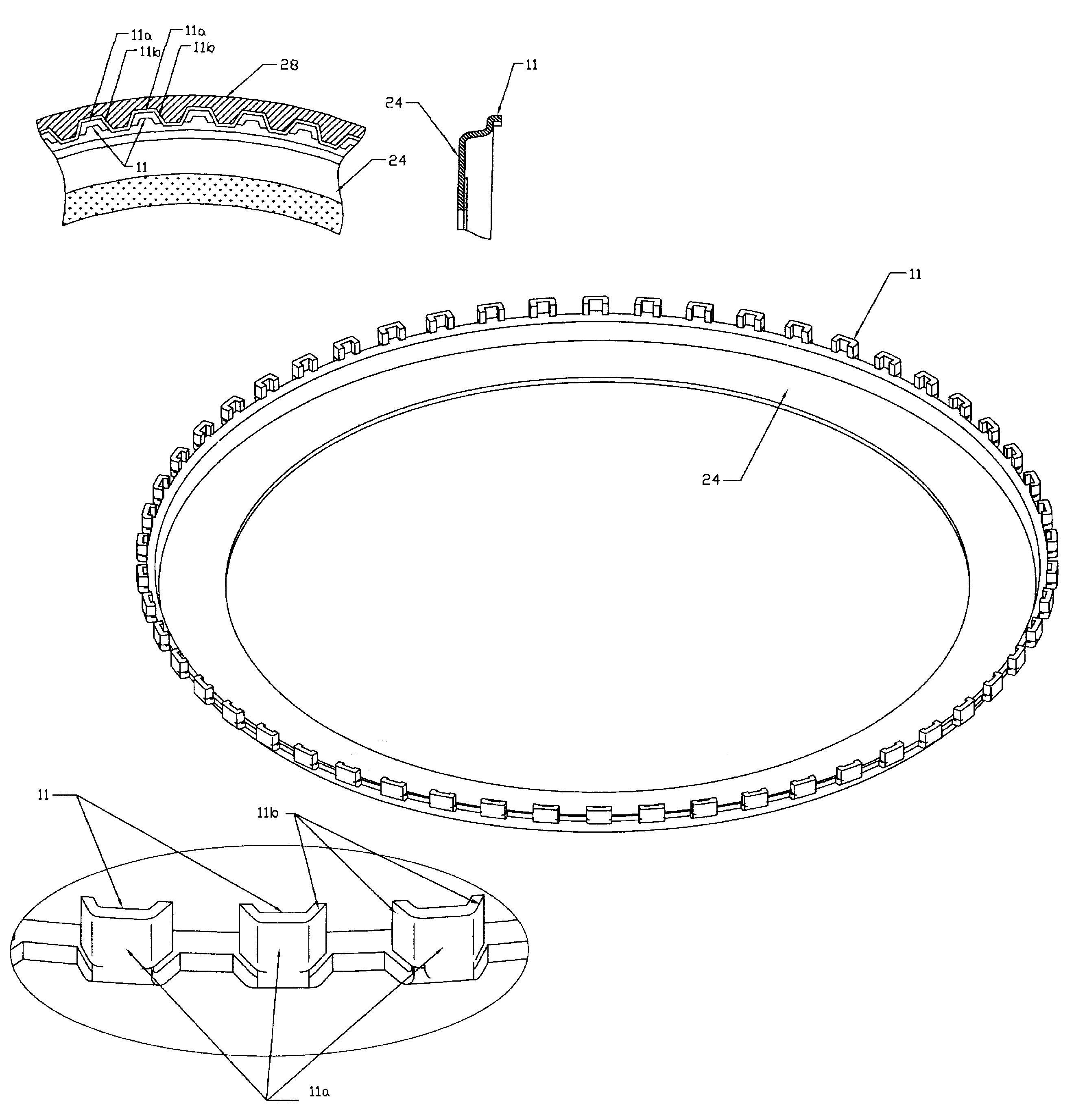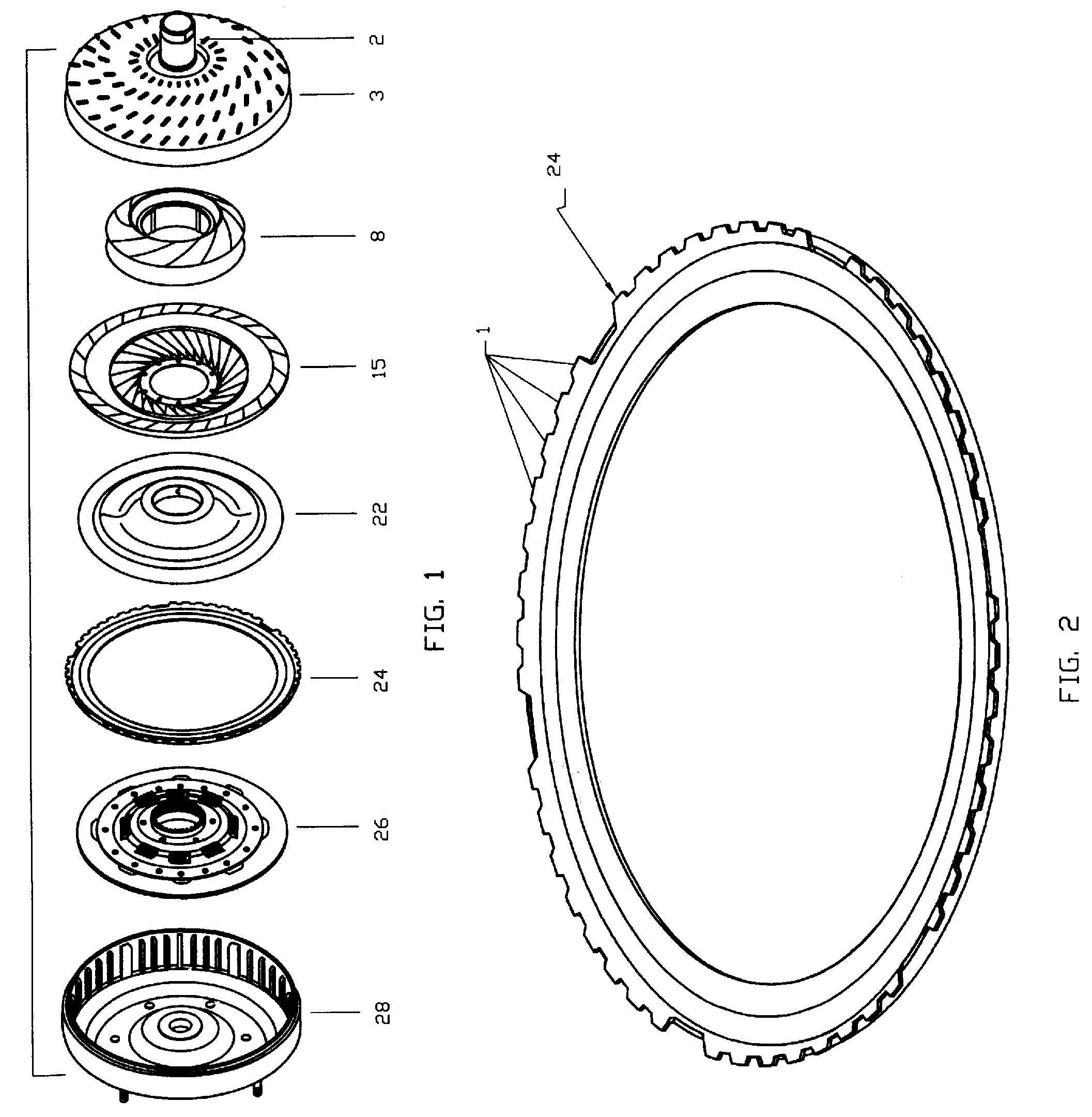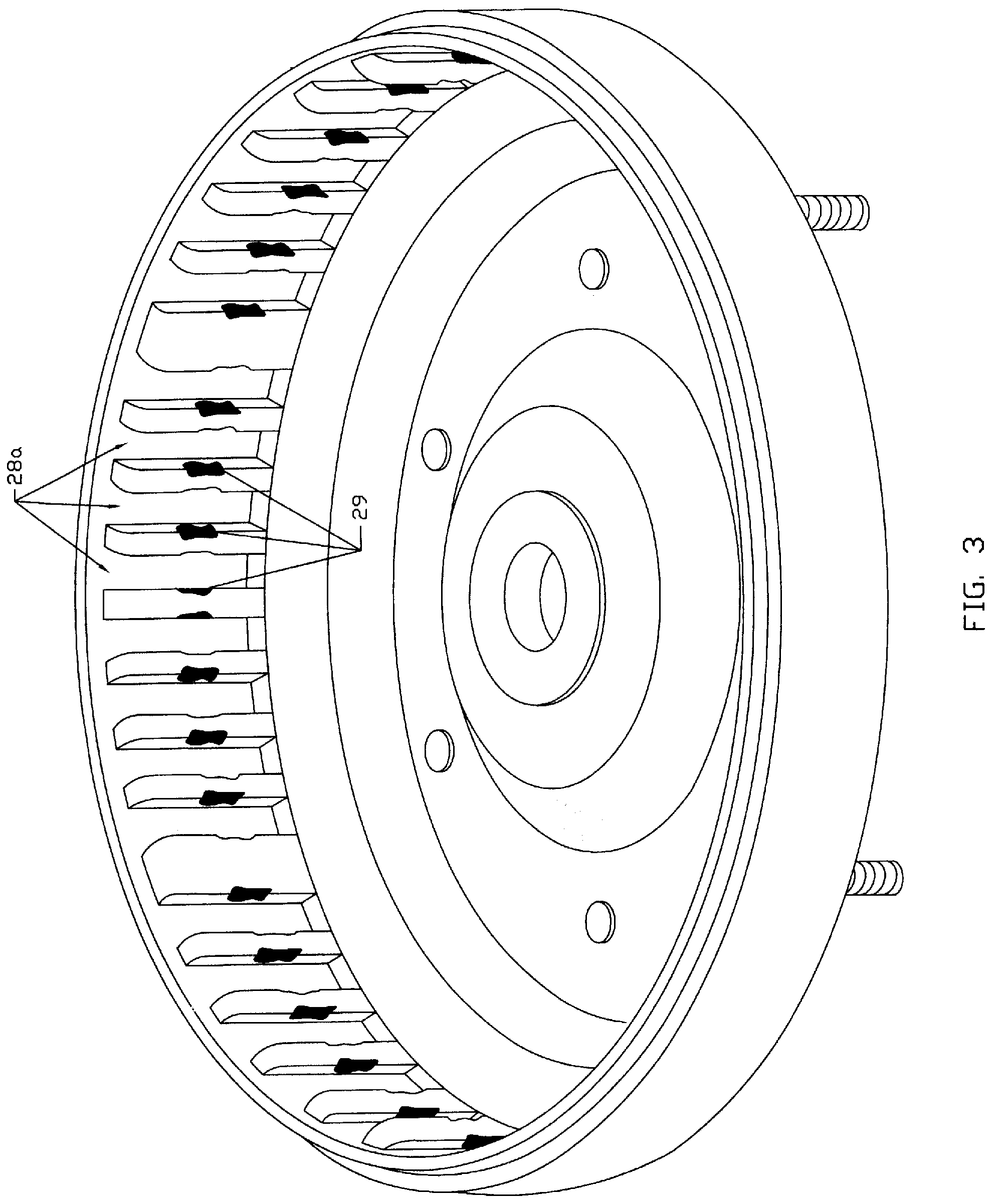Wear resistant clutch plate
a technology of clutch plate and wear resistance, applied in the direction of friction clutch, mechanical actuated clutch, clutch, etc., can solve the problems of splined engagement of teeth and channels, lateral wear and tear of splined engagements, and excessive wear of teeth themselves, so as to reduce or eliminate engagement wear
- Summary
- Abstract
- Description
- Claims
- Application Information
AI Technical Summary
Benefits of technology
Problems solved by technology
Method used
Image
Examples
Embodiment Construction
[0028]In a preferred embodiment of the present invention of a wear resistant drive plate or ring, the front of some or all of the teeth of the drive plate are initially formed, such as by stamping, with an extended length and then bent perpendicularly. Alternatively, the bent teeth are formed initially with the formation of the drive plate. The bending of the front of the teeth is in contrast to the bending of the tooth flank as in the prior art. As a result, a much longer drive contact area is formed when compared to that of a typical wear-prone assembly. The amount of tooth extension and upbend in the forward direction away from the plate or ring is essentially unlimited (limited only by channel length and interference with other components), with resultant reduction in concentrated pressure and wear in the assembly. This is effected by converting the scraping contact between drive plate and into a sliding one. Also, with perpendicular elongation of the teeth elements, tilting pla...
PUM
 Login to View More
Login to View More Abstract
Description
Claims
Application Information
 Login to View More
Login to View More - R&D
- Intellectual Property
- Life Sciences
- Materials
- Tech Scout
- Unparalleled Data Quality
- Higher Quality Content
- 60% Fewer Hallucinations
Browse by: Latest US Patents, China's latest patents, Technical Efficacy Thesaurus, Application Domain, Technology Topic, Popular Technical Reports.
© 2025 PatSnap. All rights reserved.Legal|Privacy policy|Modern Slavery Act Transparency Statement|Sitemap|About US| Contact US: help@patsnap.com



